Having an exotic plant is everybody’s dream. Anthurium angamarcanum is one plant that collectors fall in love with because of the shiny, velvety, dark green long leaves.
Due to its low maintenance care and air-purifying properties, it might be one great addition to your indoor plant collection.
Generally, Anthurium angamarcanum prefers temperatures ranging from 65°F to 75°F, high humidity levels of 70-80 %, and bright indirect light. Furthermore, they thrive in well-draining soil with weekly watering and a balanced fertilizer once a month.

Even though it requires a low amount of care and is quite a resistant plant, don’t ignore any aspect while growing the Anthuriums.
Continue further to know all about Anthurium angamarcanum care and learn to flourish to its full potential.
Table of Contents Show
Overview of Anthurium Angamarcanum
Did you know? Anthurium angamarcanum is mostly found in Ecuador and was first described by Luis Sodiro in 1901.
| Scientific Name | Anthurium angamarcanum |
| Common Name | Anthurium angamarcanum |
| Native | Ecuadorian rainforests and found in Southern America |
| Family | Araceae |
| Hardiness Zone | 11 |
| Plant Type | Epiphytic Tropical plant |
| Foliage | Shiny, Velvety Dark Green leaves with growth up to 2 ft |
| Blooms | Monocot Blooms with thin green-colored spathe |
| Growth Size | 4 to 5 Feet height |
| Availability | Rare |
| Toxicity | To pets and kids |
| Speciality | Purifies Air, Removes harmful chemical like ammonia and formaldehyde |
Anthurium Angamarcanum: Ultimate Grow & Care Guide
They don’t need much care and nourishment. Little or moderate care will do the job even for full potential growth.
| Factors | Optimal Conditions |
|---|---|
| Sunlight | Shady, bright, indirect sunlight |
| Watering | Regular watering(1x-2x a week)during summer and spring |
| Temperature | 65°F to 75°F, Never below 55°F |
| Humidity | 70-80% |
| Soil | Rich Organic Soil with good drainage |
| Fertilization | Balanced fertilizer once or twice a month |
| Pot Type | Netted Pot or Ceramic/Terracotta pot with good drainage |
| Propagation | Root division and Stem cuttings |
| Repotting | Once every 2 to 3 years |
| Pruning | Only if the leaves are yellow or dead |
| Pests | Spider mites, Mealybugs and Aphids |
| Diseases | Rhizoctonia Root Rot, Phytophthora infection, Bacterial blight and Bacterial Wilt |
1. Adequate Sunlight and Proper Location
In the natural habitat of Anthurium angamarcanum, it stays under the trees in the forest, only getting indirect sunlight.
While growing at home, too, you should provide bright but indirect or diffused sunlight for optimal growth.
Provide Anthurium angamarcanum 8-9 hours of bright indirect sunlight for its proper growth.
As a leady plant, Anthurium needs constant light to produce chlorophyll. Without proper light exposure, the plant will have slow growth, and the dark green leafy color will also go fading.

Keep the plant under an open and in a room with windows but stay away from direct sunlight as it can cause sunburns in the leaves.
It would be best if the pot is near an east-facing window covered with sheer curtains to shield them from the harsh sunlight. This way, it will also get indirect sunlight and stay safe from sun damage.
Also, make sure to rotate the pot on the axis every few months so that every part of the plant gets enough sunlight.
You can also use Grow light with lighting that mimics natural sunlight about a 400-700nm color spectrum.

Know about different light colors for plants: What Light Color is Best for the Plant’s Growth?
2. Watering Requirement
Proper watering is one of the most important and sometimes even neglected parts while growing any plant.
Anthurium angamarcanum prefer a humid habitat because of their topical origins, but they don’t like to sit in soggy soil for long.
Water your Anthurium angamarcanum once or twice a week to keep their fleshy roots moist enough during their growing season. Cut back on watering during the winter season.
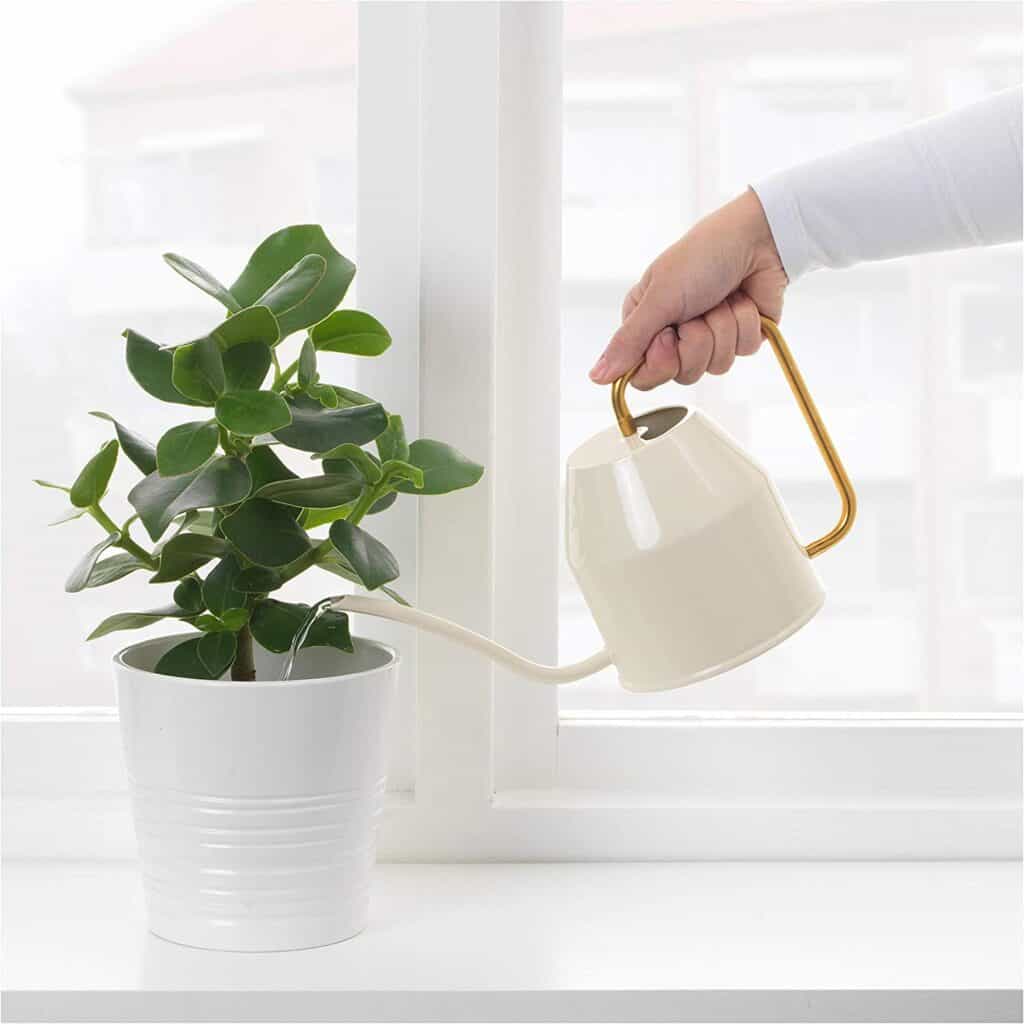
Be wary about overwatering as it can lead to root rot on the plant due to standing water.
They prefer light watering only to be in moist soil. Let the top half of the soil dry out a little between each watering.
Tips to Water Anthurium Angamarcanum Properly
- Before watering, use a soil moisture sensor to check the moisture level.
- Alternatively, insert your finger to check the level of moisture. Before watering, the top 2 inches of soil should feel drier.
- Use rainwater or distilled water to water the plant. Using tap water can have a buildup of harmful chemicals in the roots.
- If you have an aquarium at home, the best would be to use fish water as it contains minerals and nutrients helpful for optimal growth.
In the fish aquarium, beneficial bacteria consume the harmful ammonia from the fish excrement and break it down into nitrites first (not used by plants).
It subsequently turns the Nitrites into Nitrates, an element that plants adore.
3. Warm Temperature
Talking about tropical evergreen plants, like Anthuriums, they don’t fancy extreme temperatures. They like to stay in warm temperatures.
Ideal temperatures for Anthurium angamarcanum ranges from around 65°F to 75°F but going any lower than 55°F can damage the plant.
Temperature extremes may inhibit plant growth and cause other issues such as limp and droopy leaves, dropping leaves, fading leaf color, and so on.

Tips to Ensure Optimum Temperature for Anthurium Angamarcanum
- If you have your plant outdoors, bring them indoors during the winter.
- Frost blankets and heating pads can be used to protect plants from the cold.
- Another effective technique to keep soil temperature stable is to provide insulation.
- To keep the cold at bay, place young Anthurium plants in a terrarium or a mini greenhouse.
- During summers, use air conditioners and mist the plant often to keep the plant from overheating.
- Avoid placing the plant near heat vents and radiators.
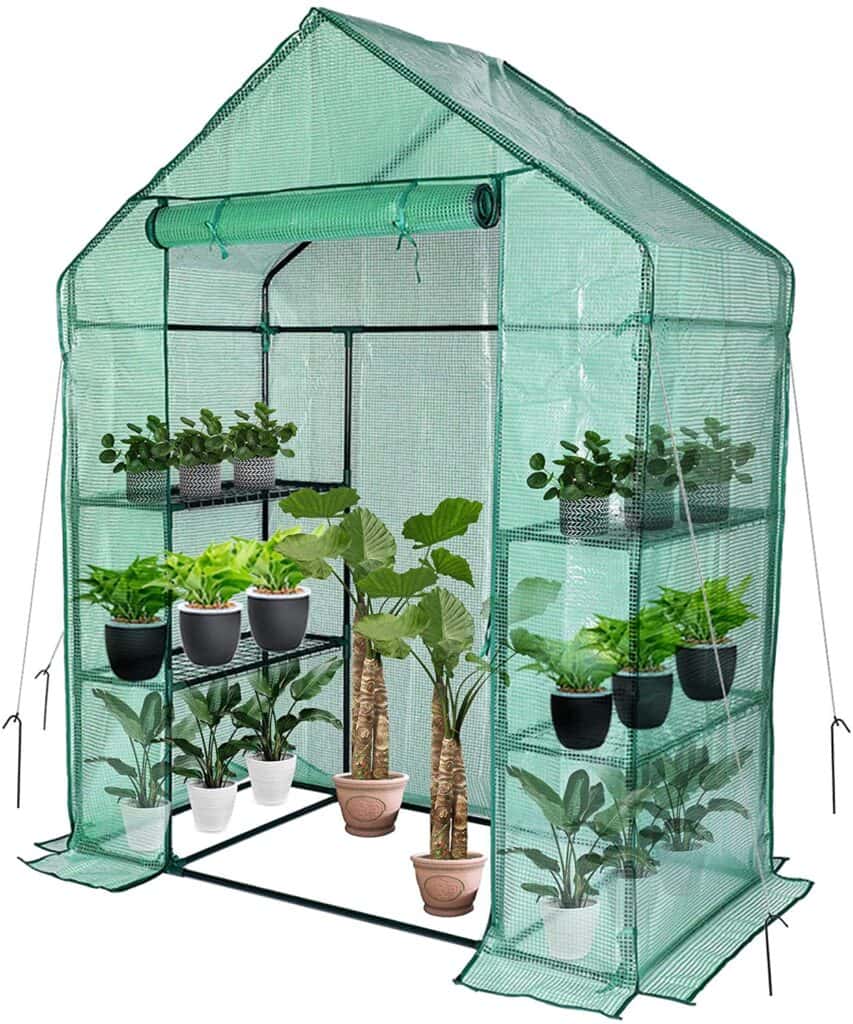
4. High Humidity
How can we even forget about humidity while growing a tropical evergreen plant? The plant stays at 100% humidity levels in its natural habitat.
Anthurium angamarcanum needs humidity levels of 70% to 80% for optimal growth.
Because Anthurium can only absorb a limited quantity of humidity and so has less water evaporation than most other plants, good humidity around the plant is much more crucial.
If the plant loses too much water, the stomata close, causing photosynthesis to cease.
Higher humidity won’t generally be an issue for a tropical plant like Anthurium, but the combination of high humidity and high temperature might invite pests and other diseases.
Low humidity can be a problem in Anthuriums with symptoms like wilted leaves, rapid soil drying, slow growth, and even pale leaves. So, you want to keep the plant at ideal humidity levels.
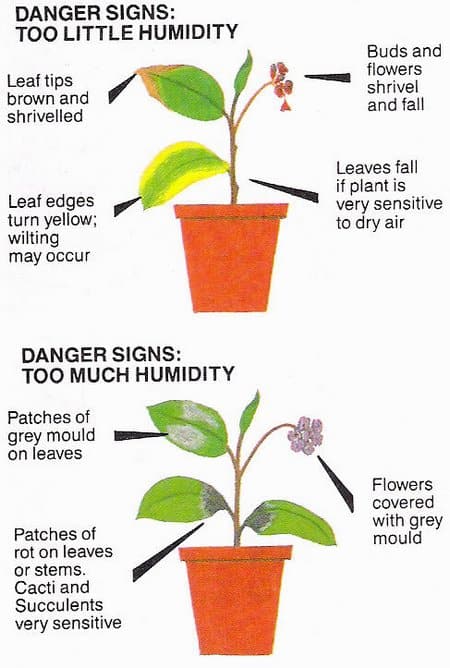
Tips to Ensure High Humidity for Anthurium Angamarcanum
- Grouping your plants is a great technique to improve humidity through natural evaporation.
- Install an electric humidifier in the room to increase and maintain ideal humidity levels.
- Mist the plant leaves on a regular basis during summer.
- To keep a plant from withering, place it in a pebble tray filled with water and allow the soil to absorb the moisture naturally.
- Place the pot in a well-lit bathroom or around kitchen windows where the air gets humidity from boiling pots.
5. Well-Draining Organic Soil
Anthuriums are epiphytes, which means they’ve grown to climb up cliffs and branches. Their roots frequently dangle in the open air or penetrate the moss and leaf litter that accumulates in tree crevices.
They get the nutrients from dead leaves, tree debris, rainwater, and animal droppings. While growing indoors, we must make sure that the plant gets a rich organic mixture.
Anthurium angamarcanum prefers well-draining rich organic aerated soil with pH between 5.5 to 6.5.
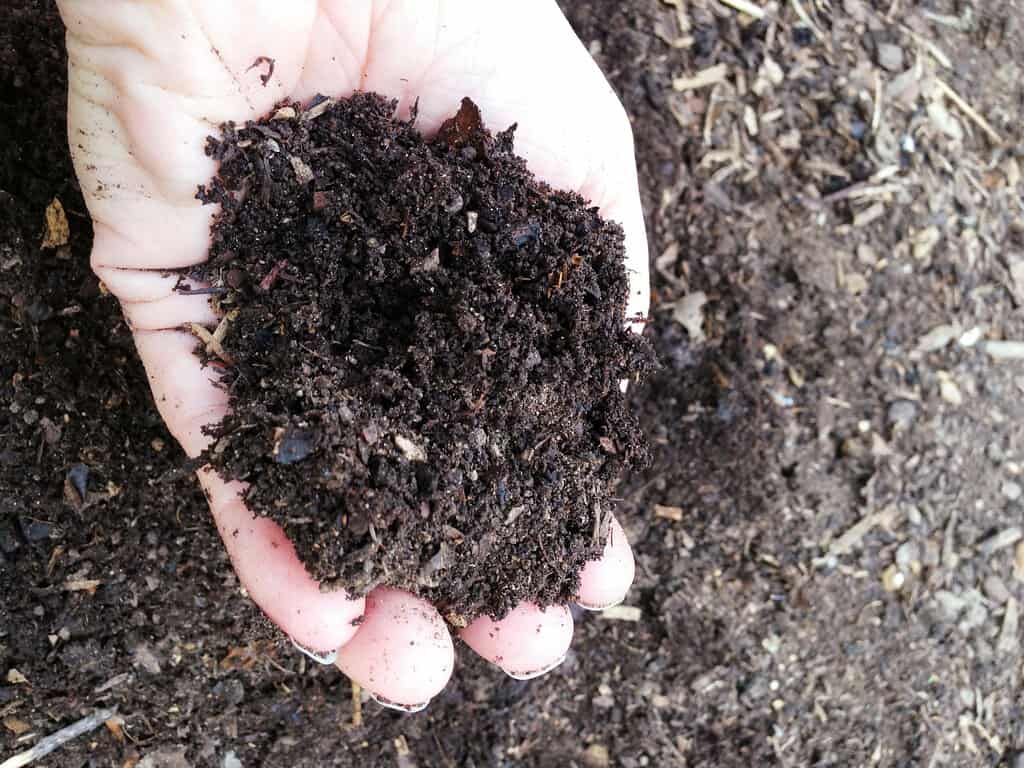
Since the Anthurium plant doesn’t prefer staying in soaked oil, the potting mix should be breathable and have good drainage.
Waterlogged soil can promote the growth of opportunistic microorganisms that cause root rot, and Anthuriums’ fleshy roots are highly susceptible to this problem.
You can make the perfect potting mix for your Anthurium angamarcanum.
For DIY potting mix, get any of the following ingredients to prepare an ideal potting mix for your Anthurium,
- One part Peat-moss,
- One part Perlite
- Leaf mulch
- Coconut Coir, and
- Two parts Orchid Mix.
Besides, you can also mix in perlite, bark, and gravel for better aeration and drainage. You can add animal droppings but stay away from the sand.
You can also get the following commercial potting mix for your Anthurium;
 Espoma OR4 Organic Orchid Mix Potting Soil |  Miracle-Gro Indoor Potting Mix |
 SUNGRO Natural & Organic Potting Mix |  Burpee Organic Premium Potting Mix |
6. Well Balanced Fertilizer
Anthurium plants generally don’t need regular fertilization or constant nourishment. As said above, the good rich organic potting mixture will usually do the job.
But using a well-balanced fertilizer will always help give the optimal growth your plant deserves.
Anthurium angamarcanum prefers fertilization every month during the growing season. Use liquid fertilizer at 1/4th strength for best results.
During winter, the plant will enter the resting stage and become dormant. Avoid fertilizing the plant during the winter months.
Organic fertilizer like fish emulsion is also better for ideal growth and helps reduce chemical buildup.

Using such slow-release fertilizer will be better for epiphytes like Anthurium as you won’t need to add in fertilizers every month.
If you are using chemical fertilizers, make sure to use fertilizers with phosphorus, nitrogen, and potassium in equal amounts.
Note: Using fertilizers with phosphorus helps the plant’s growth and will help improve its bloom health-giving it the best bloom.
However, be mindful of overfertilization. Chemical fertilizer salt buildup has the potential to kill your plant.
Yellowing leaves, dry stems, leaf burn, stunted growth, and drooping young leaves are early signs of too much plant fertilizer.
Here are some best commercial fertilizers for Anthurium angamarcanum;
- Florikan 16-5-11 NPK MAX 180 Day Timed Release Fertilizer.
- Indoor Plant Food by E Z-GRO 15-30-15 (P.T.)
- Jobe’s Organics 09524 Purpose Granular Fertilizer
7. Growth Habits
Anthurium angamarcanum is a slow grower and generally takes about three years to mature and grow to its full potential.
The medium-sized plant grows up to 4 to 5 inches in optimal conditions.
If you live in colder places, patio in summer and greenhouse in winters would be great to have the plant grow its full height.
Growing the plant indoors would be optimal if you live in tropical areas.
The leaf blades can grow up to 24 inches in an ideal greenhouse environment. But in normal indoor conditions, the plant stays quite compact.
Anthurium angamarcanum is grown by collectors for its velvety sheen and exaggerated length of the leaf blades.

This tropical velvet Anthurium has silvery, pronounced veins. Under the right conditions, this genuine velvet foliage wonder can develop leaves up to 60 cm long.
Anthurium angamarcanum has a monocot bloom with a thin green spathe. But as they don’t make up for the beauty of the plant, they aren’t generally talked about.
Some growers even cut off the blooms, whereas the blooms produce seeds for propagation in the wild.
8. Pruning Requirement
Anthurium angamarcanum doesn’t require much pruning. However, if you see some yellow, dead, or even infected leaves, prune with sterile shears.
Even if the plant does not ask for any pruning, you can prune it to keep it in the desired shape or size.
Tips to Prune Anthurium Angamarcanum Properly
- While pruning your Anthurium, prune it from top to down.
- Start by removing any dead or discolored leaves.
- Cut any wilted or drooping leaves from the base of the stem.
- Remove any leaves that are deviated from their natural shape.
- But make sure you are not removing too many leaves, have at least 4 to 5 leaves on the plant.
- Always use good quality sharp and sterile tools while pruning to avoid further infection.

9. Potting and Repotting Anthurium Angamarcanum
Anthurium angamarcanum is a slow to moderately growing plant that grows a few inches every year, although the leaves can be quite big.
Repotting isn’t necessary until the plant’s roots outgrow the pot. It generally does not happen until the first 2 or 3 years of potting the plant.
Anthurium angamarcanum loves to stay root-bound. It would not like being relocated too quickly to a larger pot.
You can repot your Anthurium any time of the year, but doing it from spring to mid-summer will be better as it is the time when the plant grows vigorously.
The plant grows best in a netted-plastic pot of about 5-8 inches. If you are repotting the plant, use a slightly bigger pot.
In the case of a regular pot, go with ceramic or terracotta pots for better drainage and a stable base.

Signs to Repot Anthurium Angamarcanum
- When the roots grow out from the drainage hole, it’s time to repot the plant
- The container or pot starts getting bent or cracked
- The leaves start turning yellow
- Roots circle around the surface of the soil
Steps to Repot Anthurium Angamarcanum
- Get a slightly bigger pot, about 2-3 inches bigger than the current one.
- Cover the drainage hole with a piece of paper towel or a mesh to avoid the soil to drain through the hole.
- Water the plant thoroughly before repotting.
- Slide the plant out gently and rinse the roots with water to look for indications of root rot.
- Using a sterilized pruning shear, remove browning or mushy roots.
- Fill the pot with a suitable soil mix and place the roots in the pot at the same depth as the previous container.
- Fill the container with potting soil and water it thoroughly to hydrate it.
Toxicity of Anthurium Angamarcanum
Anthurium angamarcanum is toxic, with calcium oxalate crystals in its leaves and poisonous sap in the steam. So, you would want to keep your pets and toddlers away from the plant.
The plant can cause skin irritation when touched, but it gets dangerous when swallowed or ingested.
It can cause irritation and burning sensation in the mouth/Gastro-Intestinal tract and swelling. After ingestion, it will lead to nausea, vomiting, and even other gastrointestinal issues.
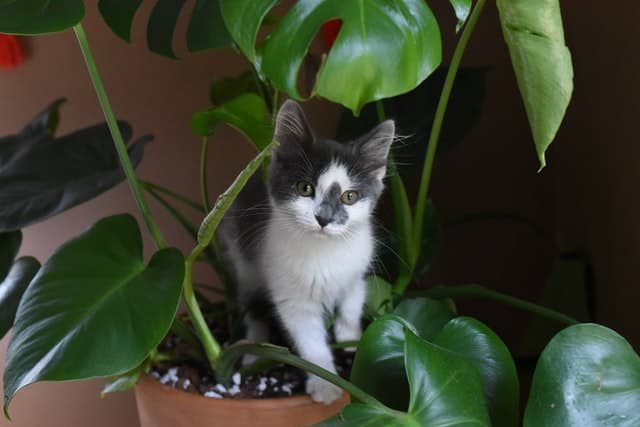
It would always be better to consult or rush to a doctor if ingested.
For Human Intoxication contact the American Association of Poison Control Centre at 1-800-222-1222 and PoisonHelp.org.
For Pets Intoxication contact ASPCA Poison Centre at (888) 426-4435.
Propagation Methods for Anthurium Angamarcanum
Multiplying this plant to decorate other parts of your home is actually easier.
You can propagate Anthurium angamarcanum through plantlets and root division at your own home.
The plant can also be propagated by stem cutting, but it can get quite hardy and resilient.
1. Propagation by Root Division
The propagation method by root division is an easier and more reliable method of propagating the plant.
It would be best to only propagate by root division once the plant turns one year old and usually during the beginning of summer.
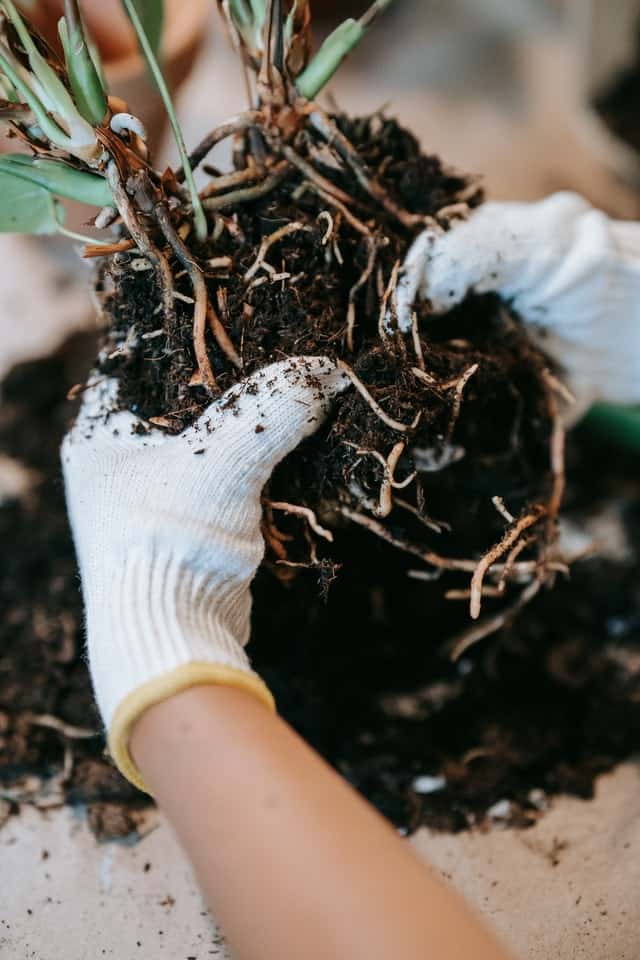
Step to Propagate Anthurium Angamarcanum Via Root Division
- Start by gently taking the plant out of the pot.
- Remove the soil around the root until you see the thick central stem.
- Look for easy-to-separate offshoots and roots.
- Then with a knife, cut off the plant into two halves, the upper half with all the leaves and few roots and the lower half with remaining stem and roots. Both the half must have a few roots.
- Then keep the parts on a wooden board for a day until you see the callus.
- Plant both the halves in a different pot.
- While planting the bottom half, the stump should be above the potting mix.
- Keep watering and use a good fertilizer on both the pots until the plant starts growing new leaves.
- Voila, you successfully propagated by root division.
2. Propagation by Stem Cuttings
To grow Anthurium by stem cuttings, you’ll need the real stalk, which has two or more nodes – one for roots and another for leaves.
Anthurium species’ roots emerge from the stem as well. Their internodes are short, measuring 1 to 6 cm in length and.6 to 4 cm in diameter along the stem.
You can identify internodes easily, they are pale green to light brown in color and are only slightly shiny.
Note: You can take a cutting with at least two nodes on the stem, preferably in spring or early summer.
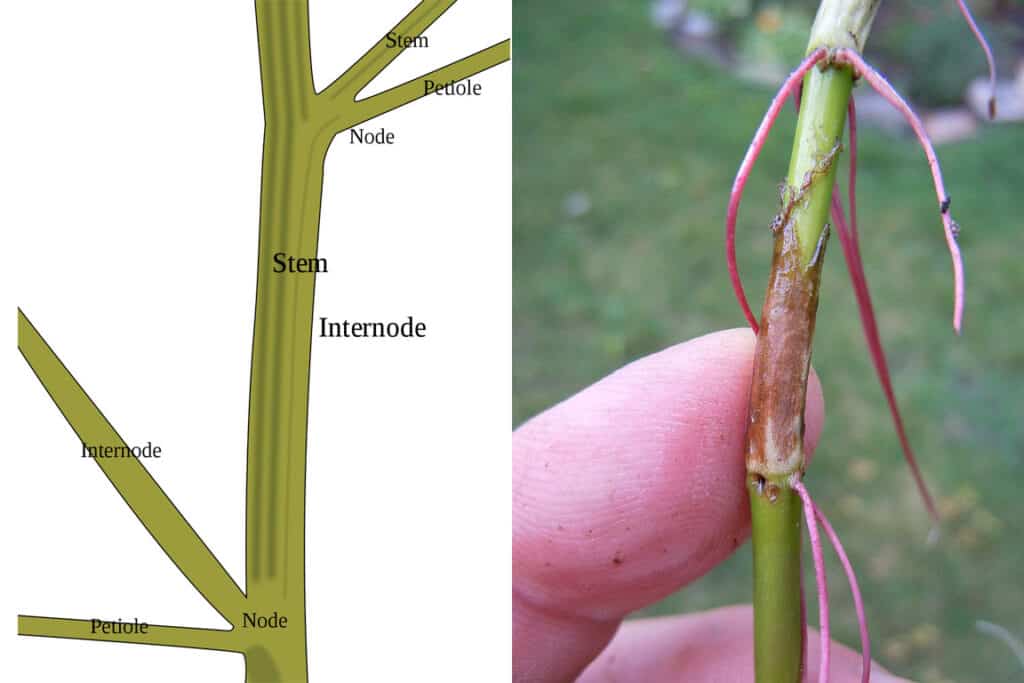
Prepare Stem Cuttings
- Always begin with healthy, green-looking stems that have one or more nodes (leaf nodes).
- Make a horizontal or vertical cut between the bottom node with a sterile pruning shear or scissor.
- Place the cutting in a glass container or plastic box and store it in a warm location.
- To aid enhance the possibility of roots, apply some rooting hormones to the cuttings.
Propagation in Potting Mix
- Fill a small 3-inch-diameter pot halfway with sphagnum peat moss.
- Make sure the peat moss isn’t too damp.
- To keep the stem cutting moist, place it into a smaller hole in the potting mix and cover it with a clear plastic bag.
- Keep it in a well-lit area with plenty of indirect sunlight and a temperature of around 70°F.

Propagation in Water
- Fill a transparent glass or small jar with distilled water.
- Submerge the bottom node of the stem cutting in water.
- Place it in a warm location with plenty of indirect sunlight.
- Replace the water in the jar every 5-7 days, or when it begins to become brownish.
- Within a month, you may notice new roots. Allow them to grow until they are at least 1 inch long.
Common Problems in Anthurium Angamarcanum
1. Common Pest
Another great thing while growing Anthurium is you won’t have to deal with pests much.
Anthurium angamarcanum is quite a pest-resistant plant, but you still want to check for some sucking pests like Spider mites, Aphids, and Mealybugs.
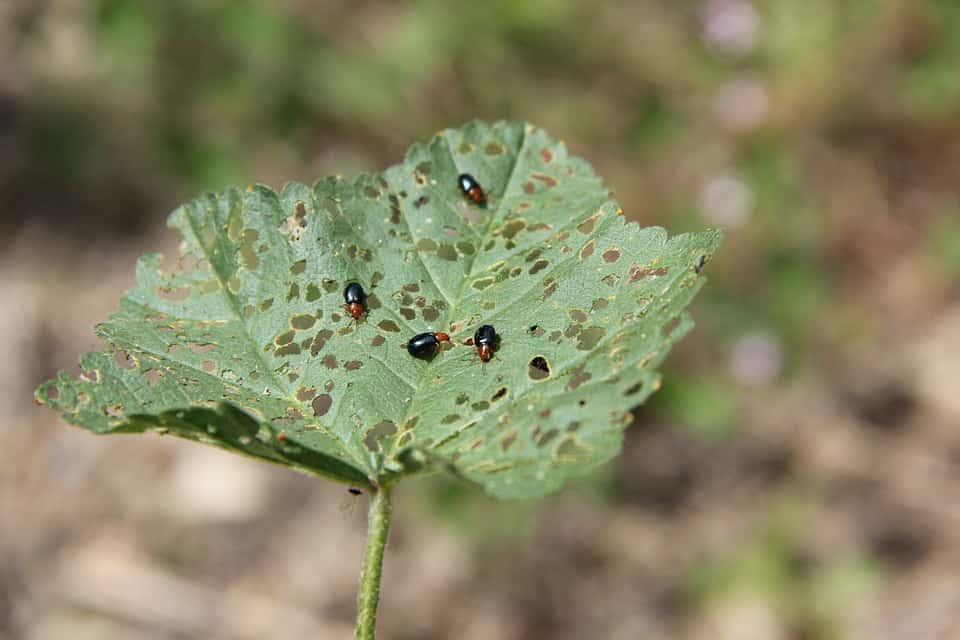
Here’s a quick overview on the pest and its problems.
| Pest | Symptoms |
|---|---|
| Mealybugs | Waxy powdery bugs with a body tapered towards the tails mainly found on undersides of leaves. Stunting, wilting, chlorosis and drooping of foliage. |
| Spider mites | Tiny White or Yellow spots on the leaves, wilting and dropping leaves. |
| Aphids | Yellow leaves with twists and curls. Little to no damage to the plant's health. |
These aren’t much of a problem in themselves, but they secrete sticky honeydew, attracting other insects.
One easy solution to this problem would be to use some blasts of water, but that might not be enough for stubborn pests.
Solutions
- Spray horticulture soap or oil sprays on the leaves once every week.
- Use a Pyrethrin based insecticide. It will successfully destroy hazardous pests, but make sure to read the manufacturer’s instructions before using it to avoid serious damage.
- Mealybugs can be hard to control, but a Malathion-based spray with dimethoate will help you get rid of them.
- Apply Neem oil to the plant using a cotton ball soaked in the oil.
Preventive Measures
- Before purchasing a new plant, inspect it for signs of insect infestation.
- A commercially certified Aphid-free potting mix will keep aphids at bay.
- Giving the plant a shower every four weeks helps to keep pests and their eggs away.
- Wiping the plant’s leaves with soap water every 10-15 days would assist the plants in repelling pests.
- Try to group your Anthuriums less.
Read more: How to Identify Insect Eggs on Leaves and Treat Pest Infestation?
2. Common Diseases
Anthurium angamarcanum, like any other tropical plant, is susceptible to fungal and bacterial disease, which is caused mostly by improper growing conditions.
Rhizoctonia, Pythium, and Phytophthora Root Rot, Bacterial Wilt, and other diseases are common in Anthurium.
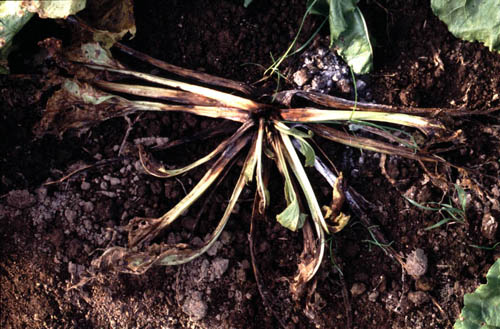
As a result, being able to identify and remove these illnesses is crucial.
Let’s go through the details;
| Diseases | Causative Agents | Symptoms |
|---|---|---|
| Bacterial Blight | Xanthomonas axonopodis pv. dieffenbachiae | Yellowed (chlorotic), water-soaked lesions in the leaf edges. |
| Bacterial Wilt | Ralstonia solancearum | Leaves veins and stems turn brown and bronze color. |
| Rhizoctonia Root Rot | Rhizoctonia solani | young stems are girdled, water soaked lesions. |
| Phytophthora and Pythium Root Rot | Phytophthora nicotianae var. parasitica and Pythium splendens | Wilting plants, root sloghing, foliage may exhibit black to brown leaf lesions. |
| Black Nose Disease | Colletotrichum gloeosporioides | Small, brown to black flecks on spadix, spadix may eventually fall off. |
According to the University of Florida, most diseases in Anthurium are due to excess moisture and overwatering.
Treatment for Bacterial and Fungal Diseases
- Apply fungicides containing Copper, Mancozeb, and Bacillus subtilis to control bacterial blight.
- Using fertilizers or fungicides with phosphorus acid might help prevent and cure the infection, but they aren’t much effective for systemically infected plants.
- Using fungicides like containing thiophanate methyl, Medallion (fludioxonil), and Prostar (flutolanil) may be effective against Rhizoctonia root rot.
- To combat Phytophthora and Pythium, fungicides such as mefenoxam, aluminum tris/Fosetyl-al, dimethomorph, and phosphorous acid may be applied.
Preventive Measures
- Proper sanitation will help stop the spread and eradicate the pathogen from the environment.
- Always use potting mixes only after steam sterilizing.
- Use a well-drained synthetic soil mix.
- Try to keep the leaves dry and don’t drench the leaves while watering.
- Always use sterile tools while propagating or working with the plant.
- For reusing the pot of infected plants, scrub off the soil and use a disinfectant to kill the bacteria.
Applying Neem oil on a regular basis may help to keep diseases at bay. Read more to find out; How to Apply Neem Oil on Indoor Plants?
FAQs About Anthurium Angamarcanum
Can Anthurium Angamarcanum be Grown Outdoors?
Yes, you can keep your Anthurium outdoors. But it would be best to bring them indoors if you live in colder zones.
The plant might die with the low temperature and low humidity outdoors.
Please place them in a container that can be moved indoors during winters whenever the temperature drops below 55°F.
Does Anthurium Angamarcanum Purify the Air?
Yes, Anthurium has air-purifying properties. According to NASA, Anthuriums are effective in removing harmful chemicals like formaldehyde and ammonia.
Watch the video to find out other air purifying plants;
Why are my Anthurium Angamarcanum Leaves Turning Yellow?
Generally, the cause of leaves turning yellow or even brown can result from the plant receiving too much nutrition. Yes, you heard it right.
Too much nutrition can also hamper the plant. So, avoid watering the plant for a while and limit yourself to plant nutrition.

Editor’s Perspective
Anyone can grow Anthurium angamarcanum, the exotic and rare plant in their homes, thanks to the low-maintenance nature of the plant.
Taking care of the plant is not hard after all. If you nail down the basics and keep the plant in ideal conditions, you will have magnificent leaves growing in your household.
We hope your Anthurium growing journey will be much easier and more convenient with the article.
Happy Growing!
